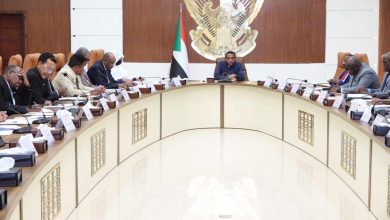Meat and Livestock Exporters Fleeing Out of Sudan

Sudan Events – Rehab Abdullah
The Head of the Meat Exporters Division at the Chamber of Commerce, Dr. Khaled Al-Maqbool, has revealed that much of Sudanese capital has left Sudan, after the devastation that befell meat and livestock exporters due to the war and the looting of transport vehicles.
Al-Maqbool revealed that the Sudanese livestock and meat sector, especially with regard to exports, suffered heavy losses as a result of the war between the Sudanese army and the Rapid Support Militia (RSF).
He pointed out that it is difficult to accurately estimate the size of the losses at the present time, but he explained that meat exports from Sudan were coming from five slaughterhouses, including four in Khartoum (the modern Al-Kadro for exports, the Jimco slaughterhouse in Al-Jadid Al-Thawra, the Karri Al-Watan slaughterhouse, and the Al-Shaheen African slaughterhouse in Omdurman, as well as About a little of the Ghnawa slaughterhouse,” he indicated in his statement to (Al-Ahdath) that all of these slaughterhouses are now stopped as a result of the war, and he added, “Until now we do not know the extent of the damage to the infrastructure,” adding that the coastal slaughterhouse in Port Sudan is now working to export sheep and goats only and does not have lines for cows, noting that it was working for Saudi Arabia and Oman almost, while the export license to the Emirates needed to be renewed, and now work is being done on it to resume exporting to the Emirates.
He noted that the Tala slaughterhouse was opened in Shendi on the River Nile State. It is a Saudi investment and exports to Saudi Arabia from Shendi, small livestock, sheep and goats. It is also in the process of obtaining an export license for the Emirates.
Al-Maqbool added that the loss to exports is that five slaughterhouses are now out of service, and a large amount of exports were coming out of them, which led to damage to workers in the sector, traders, exporters, and slaughterhouse owners. He stressed that calculating these losses accurately requires a competent authority.
He pointed out that the coastal slaughterhouse in Port Sudan is now working, although it has also suffered losses due to poor supplies as a result of the war, adding that there is indirect damage to the slaughterhouses in Tala and the coast, including the instability of the supply because many of the lambs slaughtered come from different regions (Gadarif, Kassala, Sennar, North Kordofan, Blue Nile Kosti, White Nile States), in addition to price problems, as prices rose due to the fact that there is a demand for live young lambs that are slaughtered in Saudi Arabia, which led to the competition for supply becoming fierce with meat exporters because live ones come at a higher price for exporters, in addition to the high demand from Saudi Arabia exports live lambs of small weights, and stressed the importance of activating the laws regarding live exports, as the weight should not be less than 35 kilograms.



